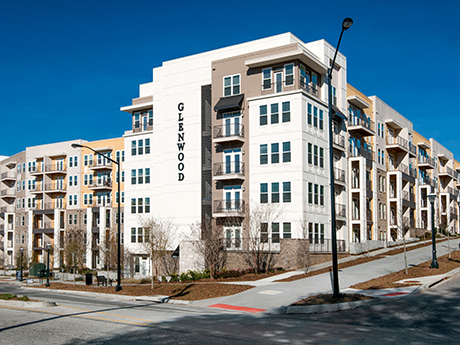In recent years, Atlanta has become a top choice for corporate relocations, causing double-digit multifamily rental rate growth, an increase in pricing and a general benefit to the industry as a whole. In 2021, rental rates rose at an average of 11.7 percent and last year that number reached 16.8 percent.
As a result, from 2021 through much of 2022 the metropolitan area experienced a record amount of investment activity, with $20.8 billion and $14.8 billion trading hands, respectively. During the first six months of 2023, however, transaction activity slowed and began returning to more typical levels, dropping approximately 82 percent year-over-year from those highs.

Much of the decline in transaction activity experienced today can be accredited to the Federal Reserve’s sizable interest rate hikes over the past 18 months, resulting in a significant expansion in cap rates and a divide between buyer and seller pricing expectations.
During the first half of 2023, approximately 54 transactions occurred, compared to 172 recorded for the same period last year for assets valued at $5 million or more. Much of this activity was driven by smaller deal sizes and private capital as institutional investors embrace a “wait and see” agenda in hopes of favorable economic conditions and more data points.
This is a recurring common theme across the country as it relates to institutional capital. In fact, there have been just three transactions over $100 million in the Atlanta area so far this year.
Today, the Atlanta market enjoys a 93.1 percent occupancy rate with an average effective rent of $1,694, or $1.66 per square foot, and a year-over-year rental growth rate of 0.4 percent.
It’s important to note, however, that you cannot paint this market with a broad brush as it relates to occupancy or collections. It varies asset-by-asset at this point versus the past couple of years, where it was across the board in terms of rent growth and stabilization with occupancy.
Today, it is more important than ever to truly understand the local market fundamentals and focus on the sticks and bricks.
Midtown Atlanta is by far the most active submarket as it relates to new development in the multifamily space, with 6,700 units that are either under construction or in lease-up.
Much of that development is Class A and focused on the top end of the rent echelon. Other hotspots include the I-85/I-75/I-20 corridors, which are largely being driven by an influx of new industrial development.
Atlanta, which is currently home to 16 Fortune 500 firms, will continue to be a hub for industry and attract new corporations and residents with its population estimated to grow by 0.9 percent year-over-year through 2028, according to ESRI.
In terms of the multifamily market strength, the geographic information systems platform cites Atlanta’s population at nearly 520,000, with 50.2 percent comprising renter-occupied housing.
With strong market fundamentals, a low unemployment rate of 4.2 percent and a solid economic base, the Atlanta metropolitan area is expected to continue to be one of the top markets for multifamily investment for the remainder of 2023 and into next year.
— By Victor Ciancetta, Senior Director, JLL. This article was originally posted in the October 2023 issue of Southeast Real Estate Business.


